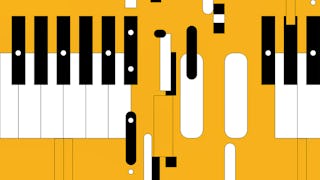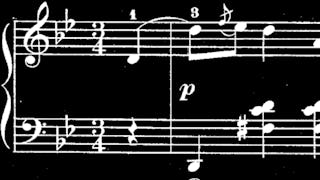This course shares insights into the process of composing music, all with the aim of developing your skills and confidence as a composer. You might be a musician looking to take your composition skills to the next level, or you might be a teacher in a secondary school searching for new techniques to share with your own students.



Music Composition: Starting a Piece

Instructor: Jane Stanley
Access provided by New York State Department of Labor
Recommended experience
What you'll learn
Develop strategies for starting a new piece
Compose short pieces
Reflect upon your current working methods and explore new ways to expand your practice
Details to know

Add to your LinkedIn profile
16 assignments
March 2025
See how employees at top companies are mastering in-demand skills


Earn a career certificate
Add this credential to your LinkedIn profile, resume, or CV
Share it on social media and in your performance review

There are 4 modules in this course
This module will explore composing working methods, introduce the idea of musical gesture and composing with 5 notes.
What's included
9 videos10 readings4 assignments5 discussion prompts
This module will cover strategies for starting a piece, explore ways to develop your harmonic language, and deepen your understanding of intervals, scales and modes. Central to this will be the goal of designing your own personalised chords and scales.
What's included
9 videos3 readings4 assignments5 discussion prompts
This module explores various forms of notation, including advanced techniques in staff notation and graphic notation. A key principle explored in the context of expanded staff notation is finding ways to use push traditional boundaries of this system to capture your individual musical ideas. The world of graphic notation is also introduced, highlighting the breadth of approaches on offer and how the creative agency within the roles of composer and performer can vary.
What's included
9 videos4 readings4 assignments4 discussion prompts
This week will explore ways to write for instruments which takes full advantage of their expressive and technical strengths. Through a study of specific examples, we will consider some general principles to do with sonic exploration of instruments. Key concepts to emerge this module will be timbre, idiomatic and extended performing techniques, register, and ways to combine (orchestrate) various instruments.
What's included
9 videos3 readings4 assignments1 discussion prompt
Instructor

Offered by
Why people choose Coursera for their career




Recommended if you're interested in Arts and Humanities

California Institute of the Arts

Berklee

Michigan State University

Open new doors with Coursera Plus
Unlimited access to 10,000+ world-class courses, hands-on projects, and job-ready certificate programs - all included in your subscription
Advance your career with an online degree
Earn a degree from world-class universities - 100% online
Join over 3,400 global companies that choose Coursera for Business
Upskill your employees to excel in the digital economy



